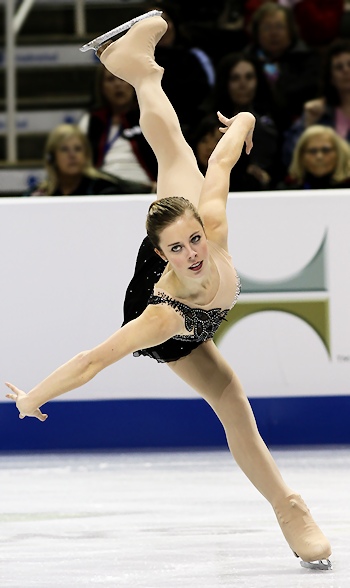Skating experts say that ballet helps figure skating and ballet pros say the same.
A skater needs a strong core body to connect the upper and lower body for controlled powerful movements. For example:
-He or she must be able to keep his or her shoulders over the hips throughout jumps, spins, footwork and edges.
-He or she must also be able to check his shoulders against his hips in Mohawks, 3-turns, brackets, rockers, counters, and Choctaws.
It is to the skater’s benefit to become aware of the feeling of twisting in the middle of the torso, and also the feeling of staying square. Ballet teachers spend hours teaching students correct ballet posture which is the same posture needed for skating. This correct posture is a neutral spine with the shoulders over the hips. The ballet student is taught to engage the lower abdominal muscles while maintaining a neutral spine. As the skater is working at the barre, he or she is training the body to maintain correct posture while moving isolated body parts. At the same time, the body is developing the ability to apply core strength by engaging the abdominal muscles, thus learning to connect the upper and lower body for strong, powerful movements. (The Relationship Between Ballet and Figure Skating)
 |
| (Spiral) |
Ballet is great for conditioning or strengthening leg muscles to have more power for each push.
A lot of ballet moves are a lot like figure skating moves. For example, what may be an arabesque to a ballet dancers is actually a spiral to a skater.
 Ballet also helps with core strength. Skaters must work up the muscles
in their abs and legs to be able to lift their leg on its own and swing
from the front of their body to the back and slowly lower it to the ice.
This all must look controlled and is usually slow.
Ballet also helps with core strength. Skaters must work up the muscles
in their abs and legs to be able to lift their leg on its own and swing
from the front of their body to the back and slowly lower it to the ice.
This all must look controlled and is usually slow.| (Biellmann) |
different moves requiring
flexibility, for example:
a lay back spin, biellmann,
or a spiral.
Happy skating!
Written by Miss Bella, age 14
aspiring figure skater and dancer


.jpg)


